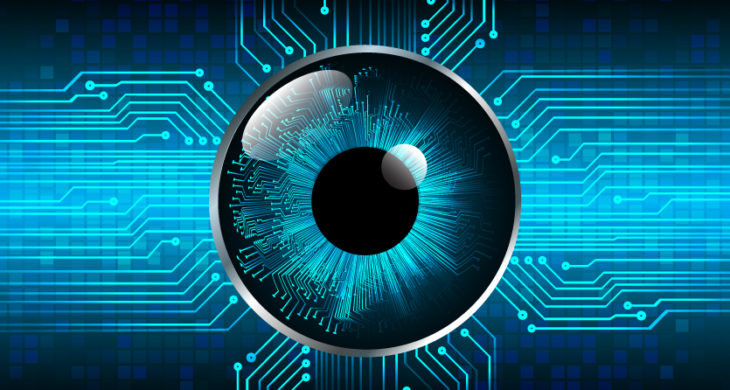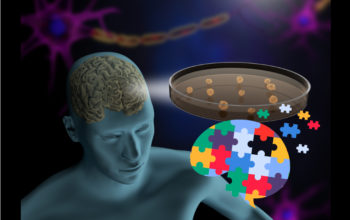
Date: 26th May 2020
The growing prevalence of ophthalmic diseases and severe eye injuries has increased the demand for artificial eyes globally. However, current prosthetic eyes cannot restore vision. Now scientists have created a biomimetic, electrochemical eye which has image-sensing functionality.
The human eye is nature at its best; a highly specialised and sophisticated organ which, due to its spherical shape and hemispherical light-sensitive retina, is an extreme fabrication challenge for biomimetic devices.
Now scientists led by Zhiyong Fan and a team from the Hong Kong University of Science and Technology, China, the University of California and Lawrence Berkeley National Laboratory, US, have created a ‘bionic’ eye designed with a high degree of structural similarity to a human eye and which has the potential to achieve high imaging resolution.
The eye consists of a metal shell at the front, an artificial retina at the back and an ionic liquid interior: dubbed EC-EYE – short for ‘ElectroChemical EYE’
The most complex part of the fabrication was always going to be the retina. The retina contains millions of light-sensitive cells (rods and cones) and other nerve cells that receive and organise visual information. As the light enters the eye it is refracted and focused by the cornea and the lens, creating a curved image, this means that the retina also has to be curved so that image can be focused sharply.
Herein lies the problem, electronic light sensors are rigid and flat such that if they are fabricated on a flat, rigid substrate – as has been done traditionally- and then subsequently bent or moulded into shape the packing density of the sensors is relatively low as space is required between them to allow for the bending.
The key to success here therefore was the team pre-fabricated the hemispherical dome so that the photosensors could be formed directly inside the dome. To start they used a thin sheet of soft aluminium foil, formed into a hemispherical shape, they then electro-chemically insulated the foil forming aluminium oxide (Al2O3). The aluminium oxide membrane contained a dense array of nano-pores. These were ideal places for the electrical photosensors to be housed.
This is where the second remarkable part of the design came into play. To mimic the photoreceptors of the retina the team used peroskite (formamidinium lead iodide), a conductive and light-sensitive material which is used in solar cells. These extremely thin peroskite nanowires formed directly in the pores of the membrane. Then an electrical connection was established to the external circuitry via another set of nanowires this time made of liquid metal (eutectic gallium–indium alloy) – emerging from the back of the device, mimicking the nerve fibres, and sealed in soft rubber tubes. Incredibly the team managed to achieve a nanowire density of 4.6 × 108 cm–2, this is much greater that the density of the photoreceptors in the human retina which is ~ 107 cm–2.
An artificial iris and lens then made up the front of the device, with the retinal hemisphere and a frontal aluminium – tungsten lined hemispherical shell combining to form the eyeball sphere. To mimic the vitreous humour the device was filled with ionic liquid which allowed the electrical exchange required for the wires to function.
The team were able to demonstrate the image-sensing function of the biomimetic device by reconstructing optical patterns projected onto the device. The eye could reconstruct the letters E, I and Y on a computer screen. The field of view was slightly narrower than the static human eye, 100° compared to ~135° and could detect a large range of light intensities, from 0.3 microwatts to 50 milliwatts per square centimetre. The responsivity of the nanosensors was very fast, both to react and recover after stimulation, ~19 ms and ~24ms, respectively, whereas photoreceptors in the retina take around 40ms and 150ms. The device could also outperform flat image sensors producing images that had a greater contrast and sharper edges.
Conclusion and future applications:
The work presented here, in Nature, represents a real step forward in the prosthetic eye field. It offers a tangible chance of restoring vision and creating vision (in the robotic field). Whilst, this work is likely to accelerate clinic advances there are still many obstacles to overcome.
Whilst this proof-of-concept artificial eye matches and even surpasses the natural eye in certain aspects, it is currently has low resolution - consisting of just 100 pixels - meaning that the light-detecting region is only about 2 mm wide. To overcome this the team could simply increase the density of the nanowires in a larger area – this would require the engineers to find a more high-throughput manner to manufacture such arrays as currently the nanowires are attached one at a time. However, one problem which may be harder to solve is the width of the liquid, external nanowires, which are around 700 µm (in diameter). They are currently too bulky for an eye socket and would need to be just a few µm in size, currently liquid-metal wires cannot be made that fine.
Manufacturing of the device is also expensive and slow, and currently it needs external power. It is hoped however, that the device can be self-powered, with each nanowire acting like a mini-solar powered cell by the peroskite and powered by the light.
Whilst the biocompatibility and operation lifetime of the eye is still untested, the real challenge will be how to wire the device up to the optic nerve. However, the impact of a biomimetic eye cannot be underestimated, and this work brings us a palpable chance of us seeing artificial eyes in a wide-range of uses within the next decade.
Gu, L., S. Poddar, Y. Lin, Z. Long, D. Zhang, Q. Zhang, L. Shu, X. Qiu, M. Kam, A. Javey and Z. Fan (2020). “A biomimetic eye with a hemispherical perovskite nanowire array retina.” Nature 581(7808): 278-282.
https://doi.org/10.1038/s41586-020-2285-x

